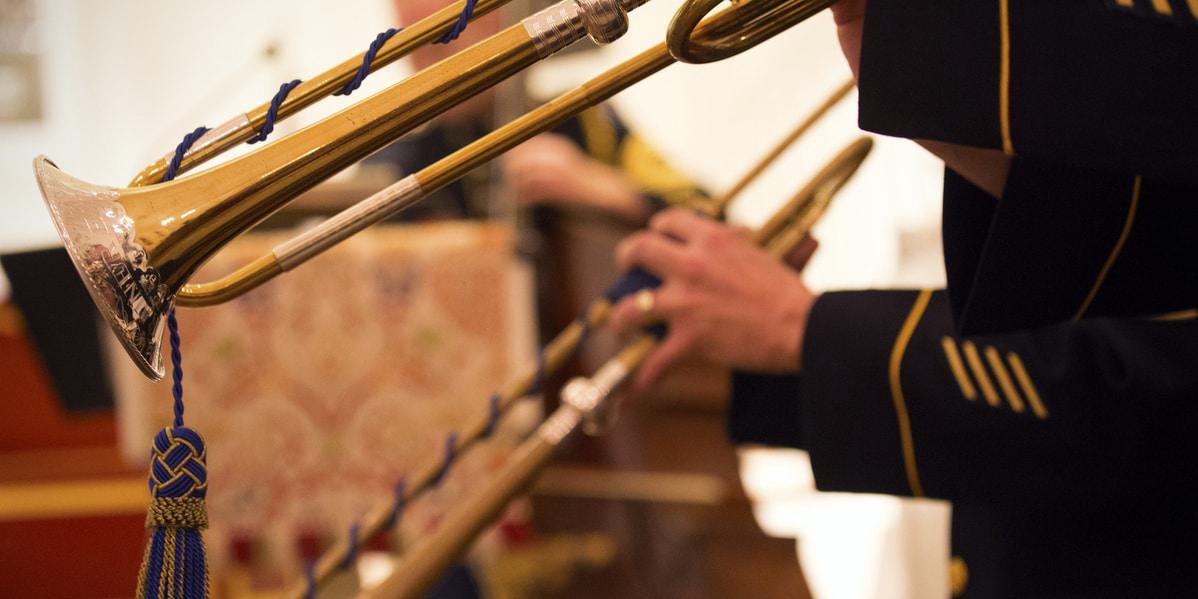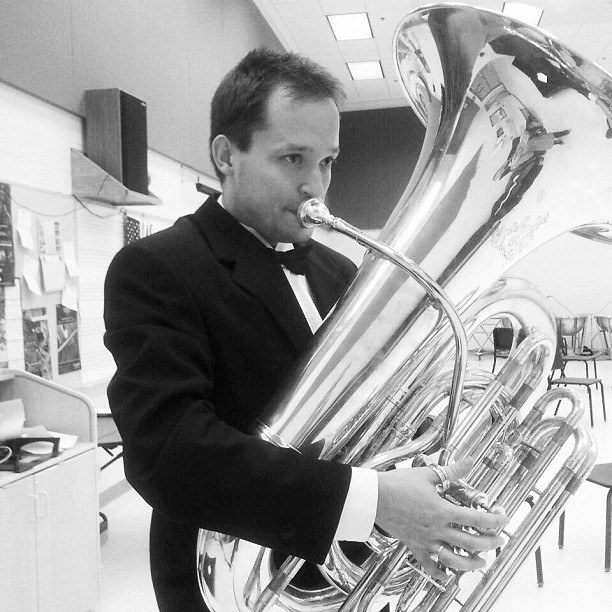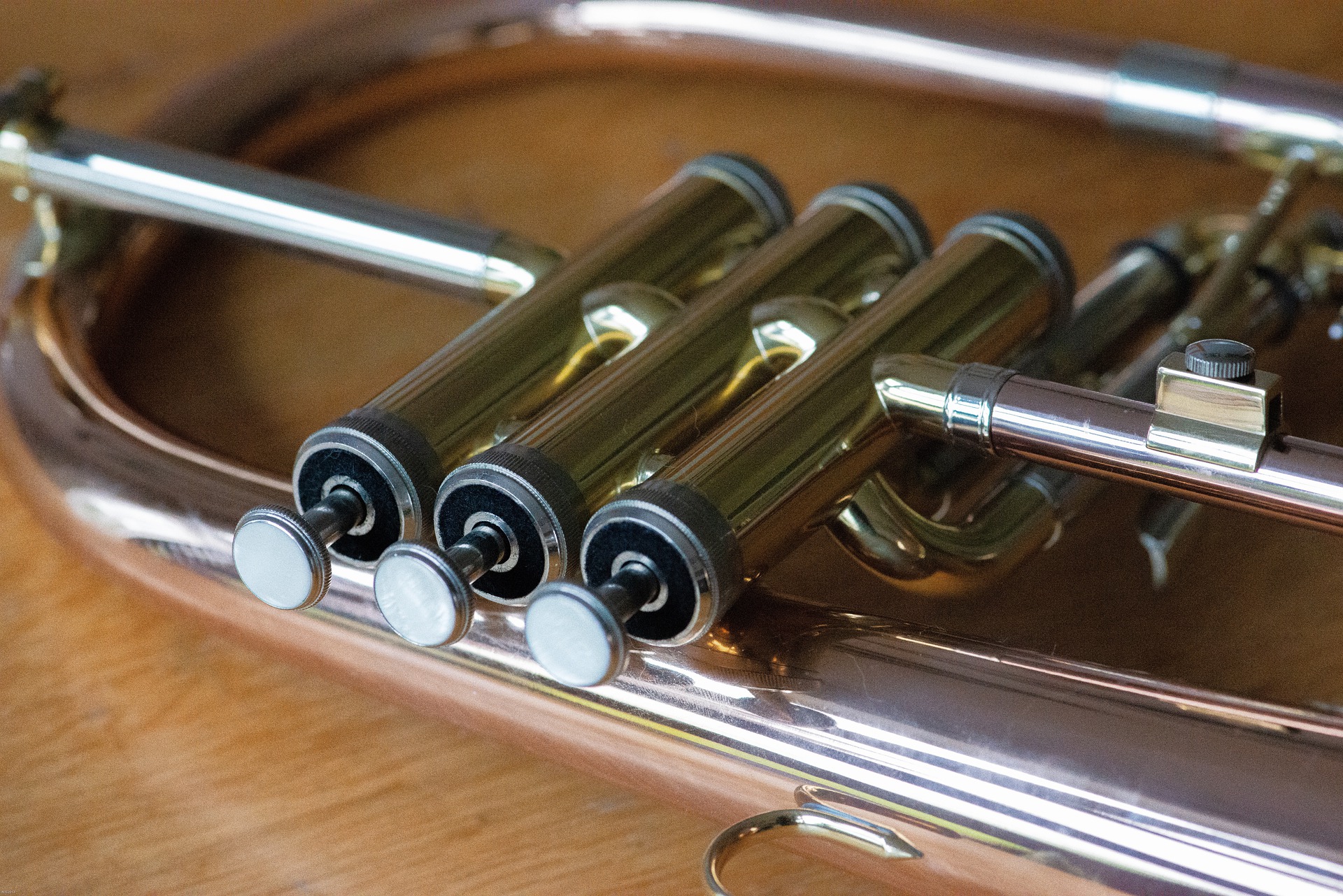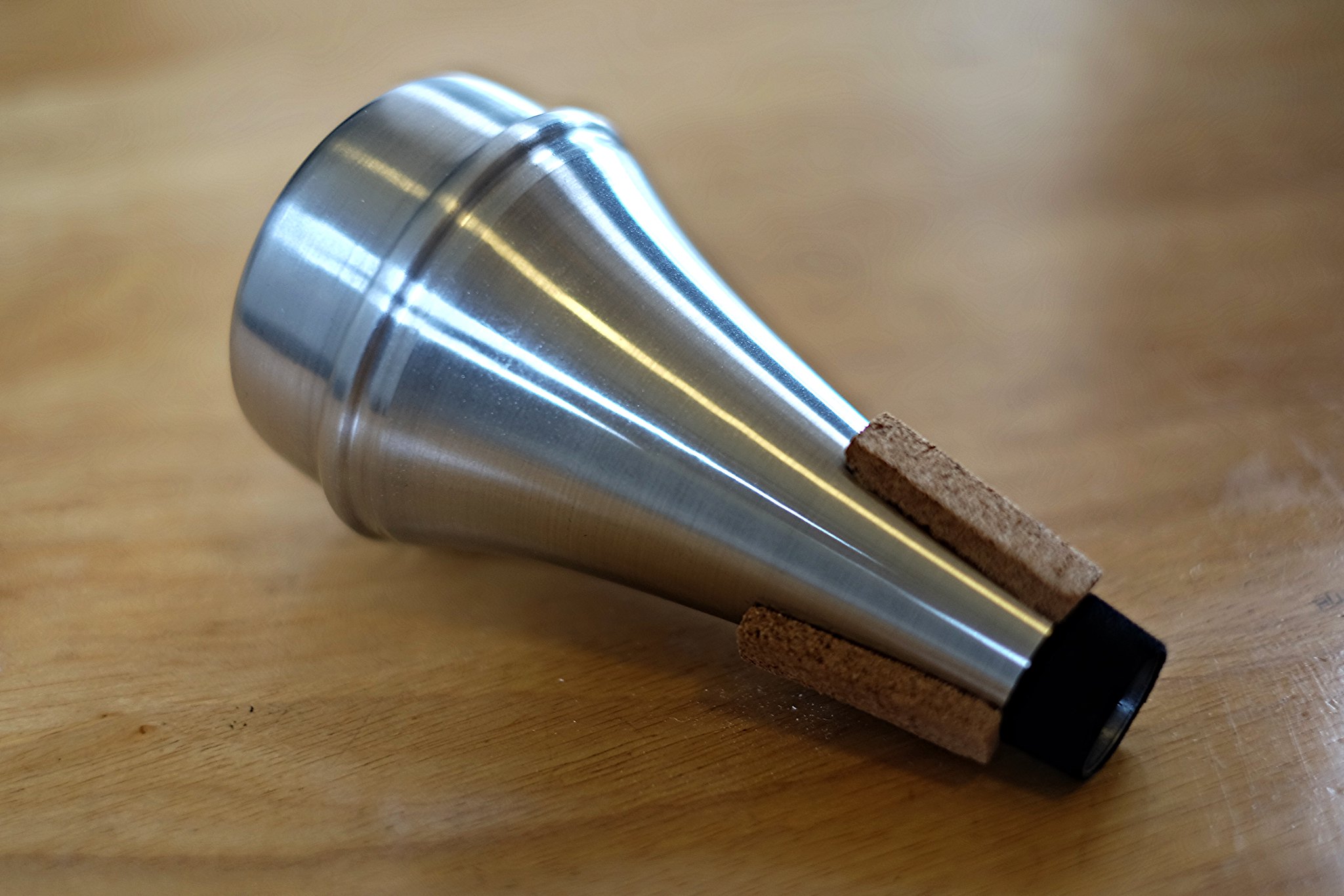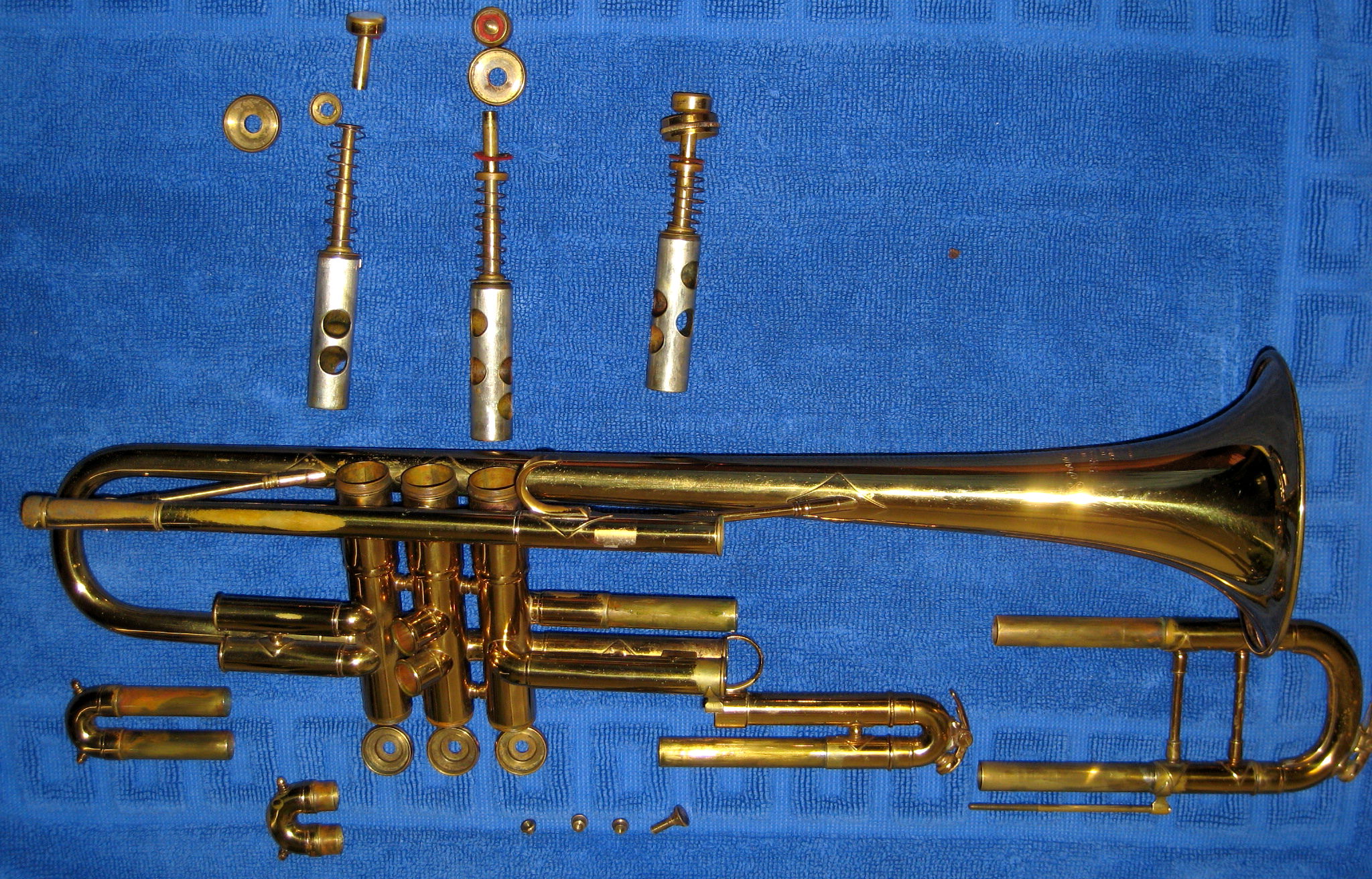The natural trumpet is also known as the Baroque trumpet. It is the predecessor to the keyed trumpet, and is very distinct from today's modern piston valve and rotary valve trumpets.

History of the Natural Trumpet
While we commonly associate the natural trumpet with the Baroque period, it actually played a prominent role before the late Baroque period, and was commonly used from about 1400 until the early 1800s.
Many types of trumpets have long been associated with warfare, and the natural trumpet was no different. It was commonly used to signal and communicate military events, such as retreats and charges.
Unlike the modern trumpet, the natural trumpet could only play pitches in the natural harmonic series. Comparing this to a trumpet today, it could only play all of the pitches for the "open" valve combination. On a modern trumpet, that would be C, G, C, E, G, Bb, C and so on.

Think about fanfare-esque music that relies heavily on intervals of fourths and fifths. Bugle calls like taps and reveille both utilize the natural harmonic series that can be played without the use of valves to adjust the length of tubing in the instrument.
As the range gets higher, the pitches get closer together, allowing one to play more melodic passages within that range.
Due to the spacing of pitches in the natural harmonic series, with larger leaps in the lower range, and closer together notes in the upper range, two distinct registers of the natural trumpet emerged, with repertoire written for each.
The lower register became known as the principale, and was used for fanfares. The upper register was called the clarino, and allowed for more melodic playing with notes spaced closer together.
One of the most famous (and most difficult) pieces written for the clarino trumpet range is Bach's Brandenburg Concerto No. 2.
Being able to play in the clarino register was such a precise skill and required very specialized talent. Often times pieces for natural trumpet were written with specific players in mind due to the incredible demands of the instrument in order to bend certain pitches to play them in tune.
Supply and demand took its course over time. Without an abundance of skilled trumpet players, the musical skills required of trumpet players actually regressed. By the Classical era of Mozart and Beethoven, the trumpet's role had largely been reduced to a fanfare instrument to accentuate sections of orchestral music.
How Is The Natural Trumpet Constructed?
A natural trumpet is quite a long trumpet, typically about twice the length of a standard modern trumpet, thus making the natural trumpet nearly an octave lower than today's Bb trumpet.
The mouthpiece is different from your typical trumpet mouthpieces as well. It features a flat and wide rim, with a shallow mouthpiece cup. The mouthpiece's unique design contributes to the characteristic brassy sound and assists with greater accuracy. Accuracy is incredibly important (and more difficult to achieve) since one cannot rely on valves, and must keep the embouchure firm to assist in slotting each pitch.
Because natural trumpets can only play in a single key, the length of the instrument needs to be modified in order to change the key it can play in. Crooks are different lengths of tubes that can be interchanged in order to allow a natural trumpet to be able to play in multiple different keys.
So while you would never be able to play in multiple keys with a single configuration of the trumpet, you could typically modify it to be able to play in Bb, C, D, Eb, E and F.
Most repertoire being written in the time of the Baroque called for trumpet parts in C and D, although there are certainly exceptions.
You'll notice on many Baroque trumpets that there is a colorful cord and tassel that is wrapped around the instrument. Due to the length of the trumpet, the cord helps align the tubing and the bell. The tassel, however, is purely for decorative purposes. What looks fancier than a Baroque trumpet with a bright blue or yellow cord and tassel?
Natural Trumpet Vs. Bugle?
So, if a natural trumpet is a trumpet without any valves, how is this different than a more modern-day bugle that we associate with military activities?
While natural trumpets and bugles do bear a number of similarities, perhaps the largest difference is regarding the length of the tubing. Since the natural trumpet is significantly longer than the bugle (about twice the length), that means that the upper harmonics which are spaced closer together are in a reasonable range for the trumpet player, allowing them to play melodies that follow a diatonic scale pattern.
Bugles on the other hand, are lower in the harmonic series, so the same diatonic patterns would be in the "stratosphere" and nearly impossible to play on a bugle. Therefore the bugle is much more restricted to larger intervallic leaps that form the characteristic bugle calls that we are familiar with.
Modern Use Of The Baroque Trumpet
As modern orchestras and their conductors strive to recreate more authentic period performances, there has been a greater call for orchestral trumpet players to perform on more traditional instruments.
In the case of the natural trumpet, this has lead to the desire to create a modernized version to solve some of the challenges and intonation issues of the original instrument. Additionally, the original natural trumpets themselves are too rare and valuable to be used during performances.
These modern reinterpretations of natural trumpets are most commonly referred to as Baroque trumpets. Perhaps the more "controversial" feature of Baroque trumpets, if you can call it that, are the addition of vents or small holes in the instrument that help accommodate changes in intonation to make certain pitches more in tune and sit better on the instrument.
Contrary to what one may think, these vents do not act like holes on a recorder. They do not let the trumpet player change pitches diatonically.
The natural harmonic series has a few notes which are not naturally in tune. The common practice with the natural trumpet, historically speaking, was to lip notes by adjusting the embouchure and airflow. But this practice was incredibly difficult and often imprecise. And, as we discussed previously, it was difficult to find the talent to be able to make such adjustments on the fly.
One way that composers of the time helped deal with the intonation issues was by using the out-of-tune notes as passing tones, rather than forcing the player to land and hold out the note.
Historically, missing notes was most likely just part of the experience. Lipping the note in combination with the valveless experience, and no vents would lead to a much riskier trumpet playing experience than modern day trumpet players are accustomed to. And, since the incorrect pitch that the musician would land on would be in the same harmonic series as the intended pitch, it most likely did not severely detract from the overall musical experience.
But times have changed. Individual performances are scrutinized and recordings archive the performances in time. To hear a trumpet player "frack" a note in a professional orchestra would be nearly unheard of. The addition of the vent holes allow professionals to be much more secure in their attacks, even if it comes at the expense of dampening the resonance of some of the notes.
